
Kinji Fukasaku was a Japanese film director and screenwriter. Known for his "broad range and innovative filmmaking", Fukasaku worked in many different genres and styles, but was best known for his gritty yakuza films, typified by the Battles Without Honor and Humanity series (1973–1976). According to the Berkeley Art Museum and Pacific Film Archive, "his turbulent energy and at times extreme violence express a cynical critique of social conditions and genuine sympathy for those left out of Japan's postwar prosperity." He used a cinema verite-inspired shaky camera technique in many of his films from the early 1970s.
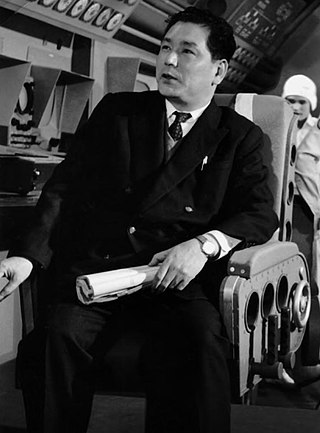
Tomoyuki "Yūkō" Tanaka was a Japanese film producer. Widely regarded as the creator of the Godzilla franchise, he produced most of the installments in the series, beginning in 1954 with Godzilla and ending in 1995 with Godzilla vs. Destoroyah. He was one of the most prolific Japanese producers of all time, having worked on more than 200 films, including over 80 tokusatsu films.
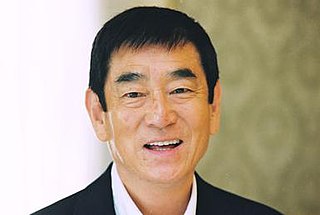
Ken Takakura, born Goichi Oda, was a Japanese actor and singer who appeared in over 200 films. Affectionately referred to as "Ken-san" by audiences, he was best known for his brooding style and the stoic presence he brought to his roles. He won the Japan Academy Prize for Outstanding Performance by an Actor in a Leading Role four times, tied with Koji Yakusho for the most ever. Takakura additionally received the Japanese Medal of Honor with purple ribbon in 1998, the Person of Cultural Merit award in 2006, and the Order of Culture in 2013.

Yakuza film is a popular film genre in Japanese cinema which focuses on the lives and dealings of yakuza, Japanese organized crime syndicates. In the silent film era, depictions of bakuto as sympathetic Robin Hood-like characters were common.

Drifting Detective: Tragedy in the Red Valley is a 1961 Japanese film directed by Kinji Fukasaku and starring Sonny Chiba. It was filmed in black and white with mono audio. The film was followed by the sequel Drifting Detective: Black Wind in the Harbor, also released in 1961. It was Sonny Chiba's first starring role in a film.

Senkichi Taniguchi was a Japanese film director and screenwriter.

Shinsuke Mikimoto was a Japanese actor. His credits include at least fifty films, as well as numerous television appearances, in a career that spanned several decades.His real name is Syuichi Suzuki.The Suzuki family on his father's side is a family that served as the palace doctor of the Kaga Maeda family for generation.
Never Give Up is a 1978 Japanese film. It was directed by Junya Sato and produced by Haruki Kadokawa.
This is a filmography of films and videos that portray the life and culture of the Ainu people of what is now northern Japan and the fringe of the Russian Far East. Representations of the Ainu can vary from the strictly documentary to the fictional and, as with representations of Native Americans in Hollywood cinema, may suffer from distortions and stereotypes.
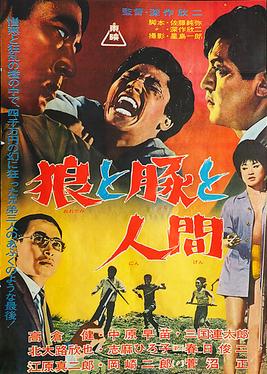
Wolves, Pigs and Men is a 1964 Japanese black-and-white crime film directed by Kinji Fukasaku.
Shinjirō Ehara was a Japanese actor. Ehara joined Toei Company and began his acting career with"Nagurikomi Nijyuohachinin shu". In 1957, he won Elan d'or Award for Newcomer of the Year. He died on 27 September 2022, aged 85.
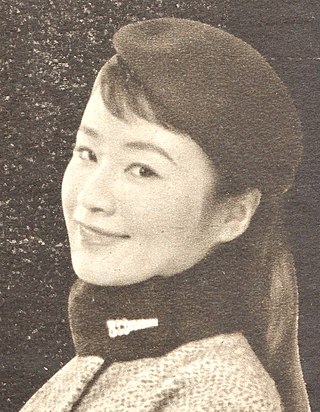
Sanae Nakahara was a Japanese actress from Tokyo. She starred in over 80 films and television shows, the most prominent being her role in the films Lady Snowblood (1973), Shogun's Samurai (1978), and Day of Resurrection (1980). Her husband was famed Japanese film director Kinji Fukasaku, and her son, Kenta Fukasaku, is another well-known Japanese film director.

Aftermath of Battles Without Honor and Humanity is a 1979 Japanese film directed by Eiichi Kudo. Although originally planned as the first entry of a new series in the Battles Without Honor and Humanity franchise, Aftermath turned out to be a lone entry and Toei refers to the film as an "extra edition" of the series.
The Battle of Port Arthur is a 1980 Japanese war film directed by Toshio Masuda. The Japanese title "Ni hyaku san kochi" means Hill 203. The film depicts the fiercest battles at Hill 203 in the Siege of Port Arthur during the Russo-Japanese War 1904 - 1905.
Ninpō-chushingura is a 1965 Japanese erotic jidaigeki film directed by Yasuto Hasegawa. The film deals with the revenge of the forty-seven rōnin. It is based on Futaro Yamada's novel "Ninpō-chushingura". It is 3rd in Futaro Yamada's Kunoichi film series. The president of Toei company Shigeru Okada asked Sadao Nakajima who directed past 2 Futaro Yamada's Kunoichi films to direct the film but he declined the offer.

Kumeko Urabe, born Kimura Kume, was a Japanese movie actress, one of the first in the country. She worked on stage and in film and television. Urabe was born in a rural part of Shizuoka Prefecture. She lived in several homes while growing up, as she relocated with her father, a Buddhist priest, among the temples to which he was assigned. Urabe completed her education in Numazu, and left school in 1919 to join a theatre company, touring under various stage names as an actor and dancer.
Jakoman and Tetsu is a screenplay by Akira Kurosawa and Senkichi Taniguchi that was based on the novel Nishin gyogyo by Keizo Kajino. It has been adapted into film twice.
The Valiant Red Peony is a 1968 Japanese yakuza film directed by Kōsaku Yamashita. It stars Junko Fuji. She landed the lead role for the first time in the film and The Valiant Red Peony was a big hit. The Valiant Red Peony is the first episode in the Valiant Red Peony aka Hibotan Bakuto film series.
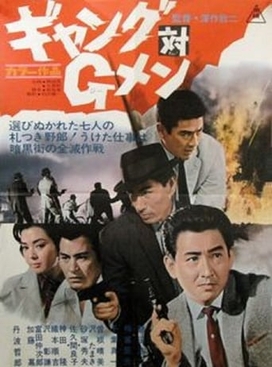
Gang vs. G-Men is a 1962 Japanese color crime thriller film directed by Kinji Fukasaku starring Kōji Tsuruta, Shinichi Chiba, and Tetsurō Tamba. In an interview with Chris Desjardins contained in the book Outlaw Masters of Japanese Film, Fukasaku called the film "the story of an ex-yakuza who becomes an undercover policeman."

Yellow Fangs is a 1990 Japanese disaster film directed by Sonny Chiba. It is the 20th anniversary commemorative work of Japan Action Enterprise and adapts the Sankebetsu brown bear incident in December 1915. The action film stars Hiroyuki Sanada and Mika Muramutsu as childhood friends who hunt down a man-eating bear. Muramatsu won the New Actor Award at the 14th Japan Academy Film Prize for her role in the film.













